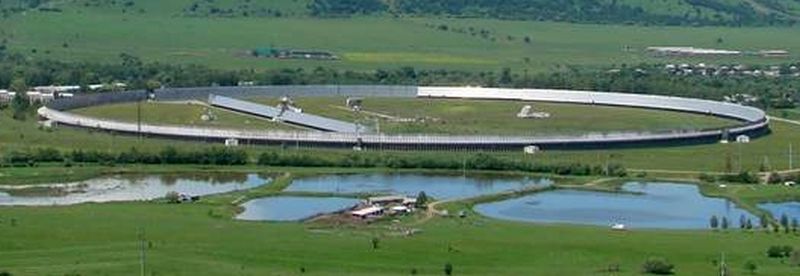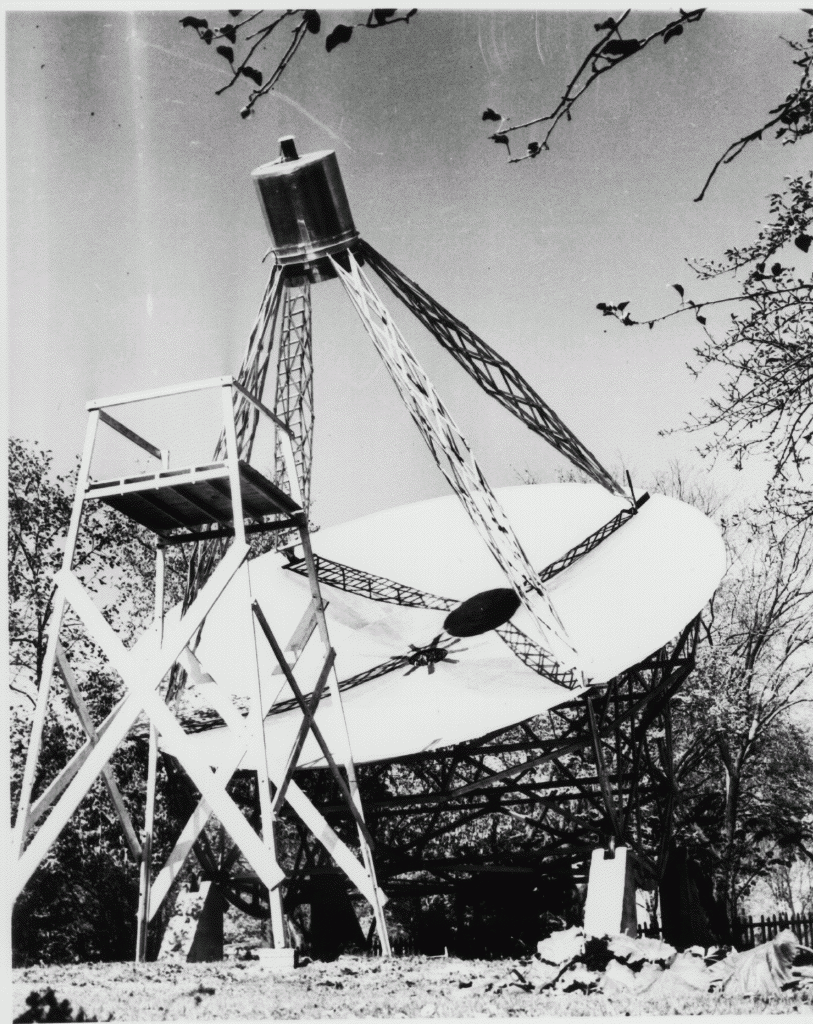After years of construction, China’s new radio telescope is in action. The telescope, called FAST (Five-hundred-meter Aperture Spherical Radio Telescope) has double the collecting power of the Arecibo Observatory in Puerto Rico, which has a 305 meter dish. Until now, Arecibo was the world’s largest radio dish of its type.
FAST is made up of 4,450 individual panels and is cradled in a natural basin called the Dawodang depression in Guizhou, Southwest China. It’s a fixed 500 meter dish that can’t be aimed, and it’s not only the world’s most sensitive listening device, but the world’s largest filled-aperture radio-telescope. (The Russian Ratan-600 radio telescope is a different type of design, and though its footprint is larger, it’s not as sensitive.)
There’s still one small hurdle for the facility though. At the end of September, FAST will undergo one final review.
“Fast has been open to Chinese astronomers since April 2019. After the National Construction Acceptance, it will be open to astronomers across the world.”
JIANG Peng, FAST’s chief Engineer.
“We fully expect a successful review at the national level, and then we’ll transition from being a construction project to a full facility,” said LI Di, FAST’s chief scientist and leader of the radio astronomy division of the National Astronomical Observatories of Chinese Academy of Sciences (NAOC). NAOC oversees FAST.
“Our hope for FAST is an open-sky policy, with the goal of advancing the work of humanity.”
LI Di, FAST Chief Scientist.
In this final national review, FAST must demonstrate that it meets its initial specifications. Those specifications were first laid out in the telescope’s design proposal in 2008. The NAOC says that in a review carried out earlier in 2019, FAST already that is as sensitive, if not more, than the original design spec.

“Once we pass this review, FAST becomes an accepted telescope for exploring the Universe,” said JIANG Peng, FAST’s chief engineer and deputy director of FAST Operation and Development Center, NAOC. “Fast has been open to Chinese astronomers since April 2019. After the National Construction Acceptance, it will be open to astronomers across the world.”
Both LI and Jiang emphasize international collaboration when it comes to using FAST. As LI said in a press release, “Our hope for FAST is an open-sky policy, with the goal of advancing the work of humanity.”
Though FAST was wholly funded by the government of China, other organizations like Australia’s Commonwealth Scientific and Industrial Research Organization collaborated on the project. But while LI and Jiang are in favor of granting access to international scientists (they’ve both worked with the Arecibo telescope and with radio telescopes in Australia,) it’s not yet clear how that will play out. Usage decisions will be up to the government of China.

Radio telescopes have been around since about 1937, when amateur astronomer Grote Reber built one in his backyard in Illinois. It was a 9 meter parabola, and it’s considered the beginning of radio astronomy.
Now radio telescopes are enormous installations. Some are monolithic like FAST and Arecibo, while some are collections of individual dishes covering a large area, like the Very Large Array in New Mexico, which has 28 separate 25 meter dishes.

Radio telescopes are used to study a variety of astronomical objects. They may be best know for detecting Fast Radio Bursts (FRBs) and pulsars.
A pulsar is formed when a giant star collapses into a rotating neutron star. As it rotates, the neutron star emits a beam of intense radiation. That beam can’t be seen visually, but radio telescopes like FAST can listen for it. By monitoring the pulsar with a powerful radio telescope like FAST, astronomers can also learn about other phenomena like gravitational waves.
Fast Radio Bursts are transient pulses of radio waves that last anywhere from a fraction of a millisecond to several milliseconds. Many FRBs have been detected, even three that repeat. But so far, their exact origin is a mystery, though they seem to be from outside the Milky Way. Though their signals are faint once they reach Earth, they are extremely energetic; much more than pulsars. FAST will hopefully advance our understanding of FRBs.
“These observations could improve our understanding of high-energy physics, star evolution, and galaxy evolution.”
JIANG Peng, FAST’s Chief Engineer
FAST has been operating scientifically for a while now, even though it hasn’t passed its final review. Scientists working with it have already discovered 130 new pulsar candidates, and 93 of those have been confirmed with other radio telescopes. These are great results, especially when compared with the Arecibo facility, which has discovered 200 pulsars since 1968.
In fact, FAST’s power and sensitivity has been producing other results, too. On August 29th, it detected more than a few dozen bursts from FRB 121102, which is the first repeating FRB source ever discovered. Other major radio telescopes around the world have been monitoring FRB 121102 since it was first discovered in 2012, but FAST is the first telescope to detect so many bursts in such a small amount of time. FAST’s science team is analyzing data from those detections and they hope to shed some light on the origin of FRBs.
“Our goal is to catch up,” LI said. “And eventually have hundreds of new discoveries every year.”
FAST astronomers will also use its power to look for hydrogen out there in space. Hydrogen is both the most plentiful and the oldest chemical element. “We’re going to discover curious emissions,” JIANG said. “These observations could improve our understanding of high-energy physics, star evolution, and galaxy evolution.”
FAST will also perform two sky surveys which will take about five years. It’ll take another ten years just to analyze all that data. Still, as JIANG says, there’s room for flexibility in the telescope’s operational schedule, to pursue any surprises that come up. The surveys will take up about half of the telescope’s observing time, leaving room for objectives like searching for exoplanets with magnetic fields, which are probably crucial for life.

“These programs are straight forward, and account for the research we can plan,” LI said. “But there’s always known unknowns and unknown unknowns that require creativity in planning.”
JIANG and LI say they are relieved and excited to get the final review completed and to let more astronomers start using it. They also say that FAST is the result of rapid technological and scientific advancement in China in the last couple decades.
“We’re a beneficiary of vast advancement of infrastructure in both science and technology,” LI said. “We are also a contributor. We hope to continue to contribute by making FAST not only a successful construction project, but also something that can be a global landmark in radio astronomy.”
There’s already been one submission process for scientists hoping to use FAST to pursue their own research. In that process, FAST received 133 proposals involving over 500 scientists. In the future, we can expect to see a constant flow of scientific papers based on FAST data.

